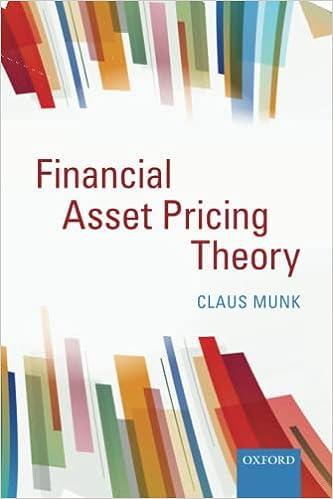Consider a one-period choice problem with four equally likely states of the world at the end of
Question:
Consider a one-period choice problem with four equally likely states of the world at the end of the period. The consumer maximizes expected utility of end-of-period wealth. The current wealth must be invested in a single financial asset today. The consumer has three assets to choose between. All three assets have a current price equal to the current wealth of the consumer. The assets have the following end-of-period values:
State 1234 Probability 0.25 0.25 0.25 0.25 asset 1 100 100 100 100 asset 2 81 100 100 144 asset 3 36 100 100 225
(a) What asset would a risk-neutral individual choose?
(b) What asset would a power utility investor, u(W) = 1 1−γ W1−γ choose if γ = 0.5?
If γ = 2? If γ = 5?
Now assume a power utility with γ = 0.5.
(c) Suppose the individual could obtain a perfect signal about the future state before she makes her asset choice. There are thus four possible signals, which we can represent by s1 = {1}, s2 = {2}, s3 = {3}, and s4 = {4}. What is the optimal asset choice for each signal? What is her expected utility before she receives the signal, assuming that the signals have equal probability?
(d) Now suppose that the individual can receive a less-than-perfect signal telling her whether the state is in s1 = {1, 4} or in s2 = {2, 3}. The two possible signals are equally likely. What is the expected utility of the investor before she receives the signal?
Step by Step Answer:






